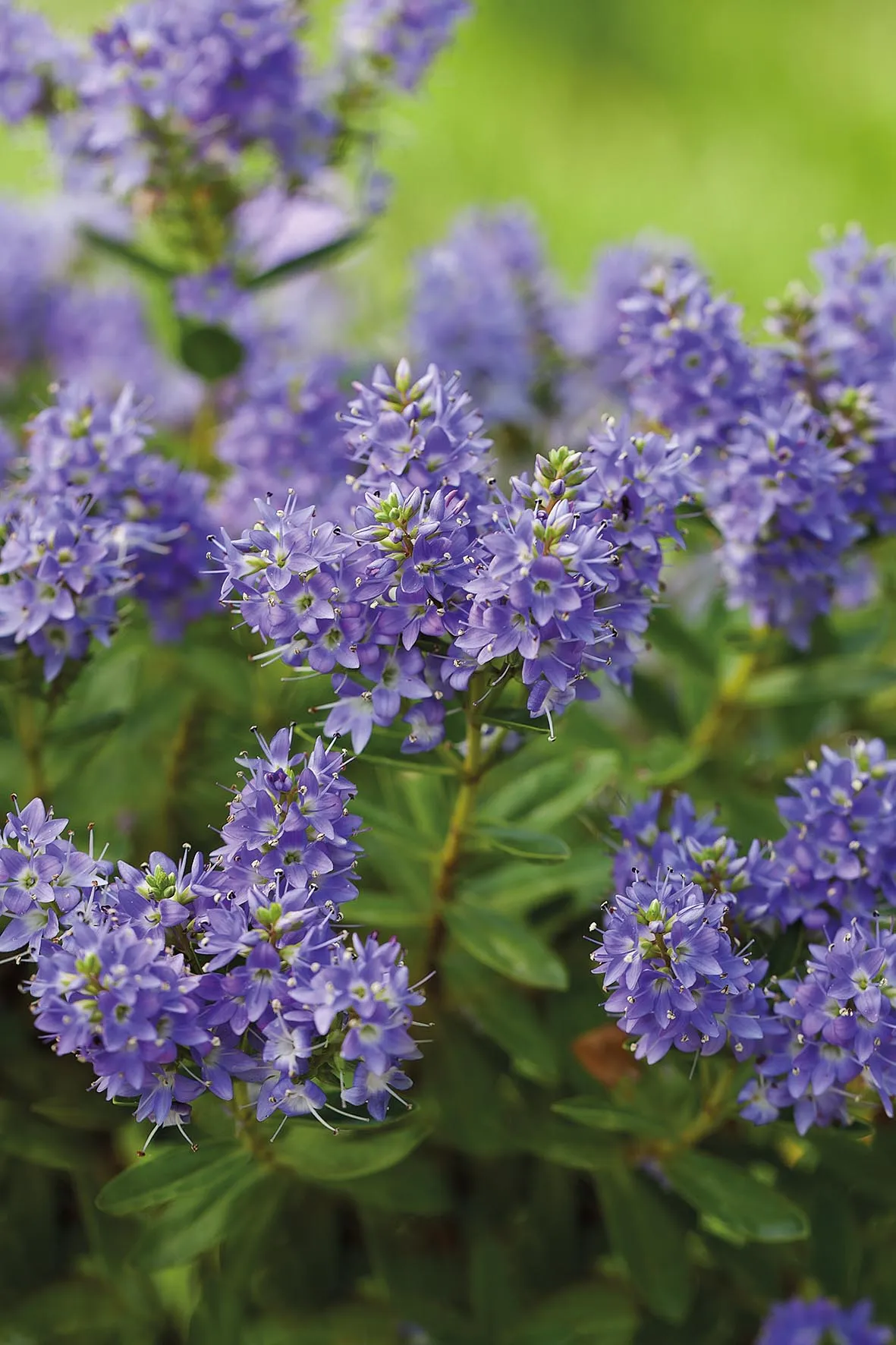Hebes are a genus of about 90 species of evergreen, long-flowering shrubs, some with coloured foliage that tend to form dense hummocks. Hebes were originally classified as species of Veronica, and more recent analysis has shown them to indeed be part of the Veronica genus where they may soon be moved back.
Watch how to grow hebe
When does hebe flower?
Most hebes originate in New Zealand with a few species scattered around the southern hemisphere. A hebe's flowering period is from midsummer to mid autumn, with most flowering between June and September.
A hebe can grow between 40cm to 1.5m, and most hebes prefer poor, well-drained soil. They will withstand high winds and salt spray. Although some hebe plants are hardy, others can suffer from frost damage to new shoots. Most have a hardiness rating of RHS H3 or RHS H4 and are suitable for gardens in USDA zones 8a to 10b.
Jump to
- When to prune hebe
- How to take hebe cuttings
- The best soil for hebe
- Why plant hebe?
- The best hebe plants for your garden
Hebe: how to care for, prune and grow hebe
When to prune hebe
A light, annual pruning will keep the neat, compact shape of hebe plants and ensure that they flower well. Immediately after they have finished flowering simply cut out the dead hebe flowers.
After a harsh winter some stems may have been burnt by frost. Inspect your hebe at the end of March and prune away any damaged stems, cutting back to a live bud.
I have seen small-leaved hebes tightly clipped into balls as an alternative to box. This looks attractive but does mean that the flowers are sacrificed.
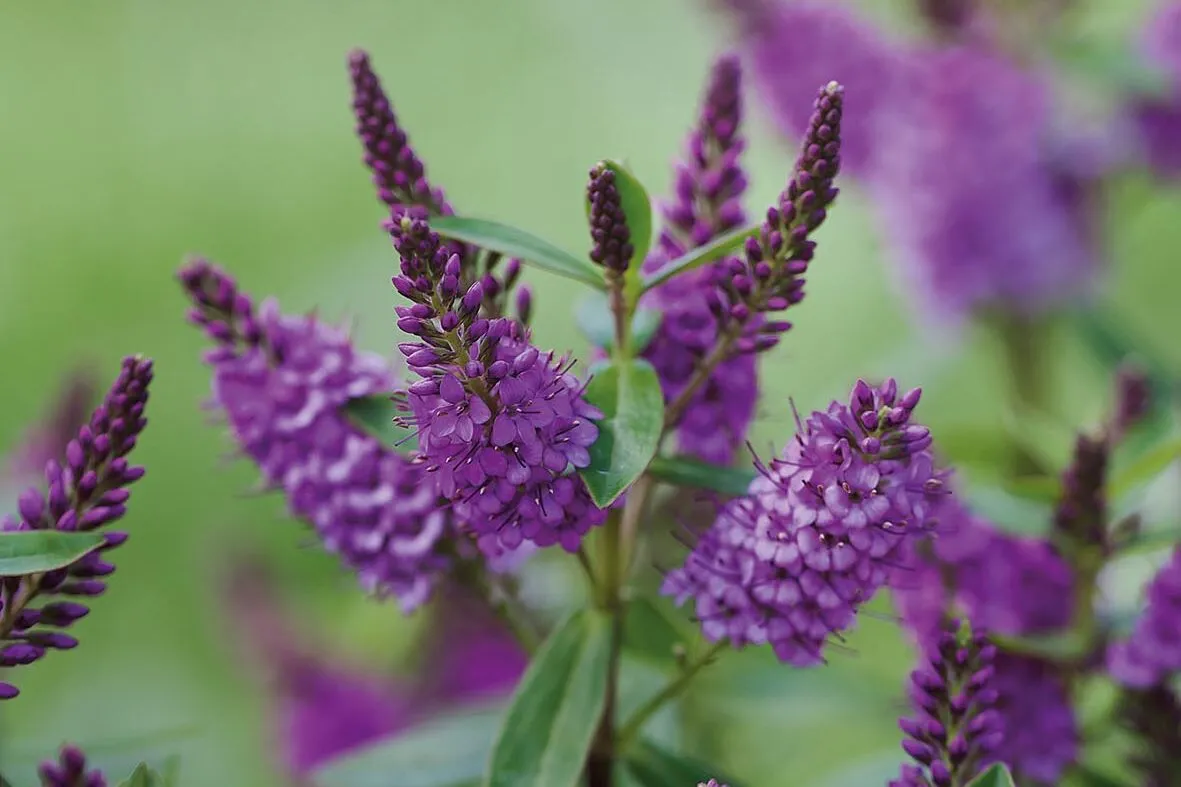
How to take hebe cuttings
It is ironic that a plant named for the Greek goddess of youth should be short-lived. Although some hebes will still be looking good after a decade or so, most will perform at their best for a shorter time and then need to be replaced.
A hebe is one of the easiest shrubs to take cuttings from, so rather than buying a replacement plant, have a go at propagating your own hebe. Begin the process as soon as your hebe starts to look sad, and by the time you need to remove it you will have a new plant ready.
Cuttings can be taken from mid July until early September. Using sharp secateurs, cut off stems of the current season’s growth that are about 15-20cm long. Immediately pop these into a plastic bag and keep them in the shade until you are indoors and ready to pot them.
Fill your containers with a proprietary cuttings compost or a mix of 50 per cent compost and 50 per cent horticultural grit, then water the pot and allow it to drain. A 9cm pot will take three or four hebe cuttings.
Prepare the cuttings by shortening them to about 10-15cm long, cutting just below the point where a set of leaves is growing. Remove the lower leaves and snip off the tip of the hebe cutting. Push the cutting into the compost, close to the edge of the pot.
If you want belt-and-braces security, you can dip the end of the hebe cutting in hormone rooting powder or rooting gel. If you have a greenhouse or cold frame, store the cuttings there, otherwise cover the pot and cuttings with a plastic bag in a light, warm place away from direct sunlight.
Regularly remove the bag to reduce the humidity around the cuttings. By the following spring, the cuttings will have rooted and can be transplanted into individual pots filled with a loam-based potting compost.
The best soil for hebe
Hebe plants need poor, well-drained soil in an open, sunny situation. Ignore the usual advice to incorporate compost when you plant shrubs and don’t give them an annual feed.
Too rich a soil will encourage weak, lax growth for your hebe that will be susceptible to frost damage. If you have heavy soil, digging lots of horticultural grit into the area before you plant will increase the likelihood of your hebe thriving. Hebes do not like cold wind, so try to plant them in a sheltered area.
Why plant hebe?
On paper, hebe plants have a lot going for them – they are long flowering, easy to grow, and evergreen. Nevertheless, despite their many qualities, they are not in fashion. Why this should be is rather puzzling; surely they deserve more recognition.
Part of the reason might be that some designers have not yet found a place for neat domes of a hebe in the naturalistic froth of perennials and grasses that currently dominates their work. Moreover, they have a reputation for being short-lived.
There are signs, however, that the tide is starting to turn in the favour of hebe plants as dynamic breeders are starting to produce new cultivars, often with notable foliage.
Most hebes form hummocks that can, with a little imagination, be used in many garden settings. Some can be clipped into neat domes that are at ease among the clean lines of contemporary gardens.
I have seen the solidity of groups of dwarf hebes looking wonderful as a background to clouds of Sporobolus heterolepis. It is a combination that would work well with other grasses and airy perennials.
Low hedges of hebe are often used as a windbreak in exposed coastal gardens and the same planting could be used to protect and enclose herbaceous plantings in inland gardens.
Some of the newer introductions have been specifically bred for pots and containers and for small, urban gardens. It remains to be seen whether hebes become sought after but a plant that is so versatile and so beautiful should nevertheless be seriously considered in any garden.
The best hebe plants for your garden
Hebe ‘Pascal’
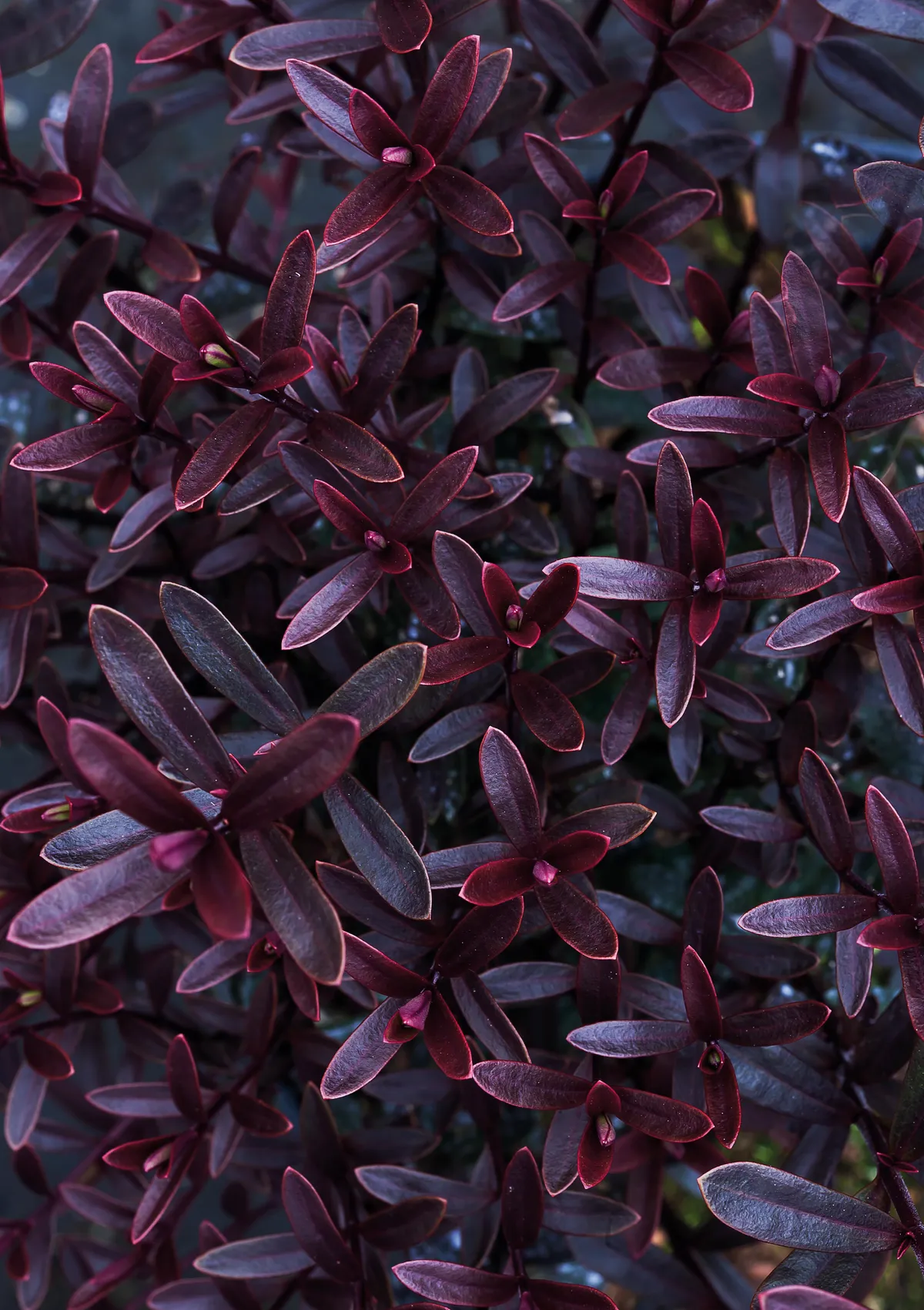
A hebe that is a truly spectacular sight during the winter when the narrow, lance-shaped leaves turn a vibrant burgundy colour. During the summer the foliage is apple-green and the flowers are a delicate pale blue. 50cm. AGM*. RHS H4†.
Hebe ‘Northern Lights’

A striking hebe plant launched two years ago that has variegated foliage comprising oval, grey-green leaves with wide, cream margins. The new growth on this hebe has dark stems and pink-edged leaves, which complement the purple flowers. 1m. RHS H3.
Hebe ‘Sparkling Sapphires’
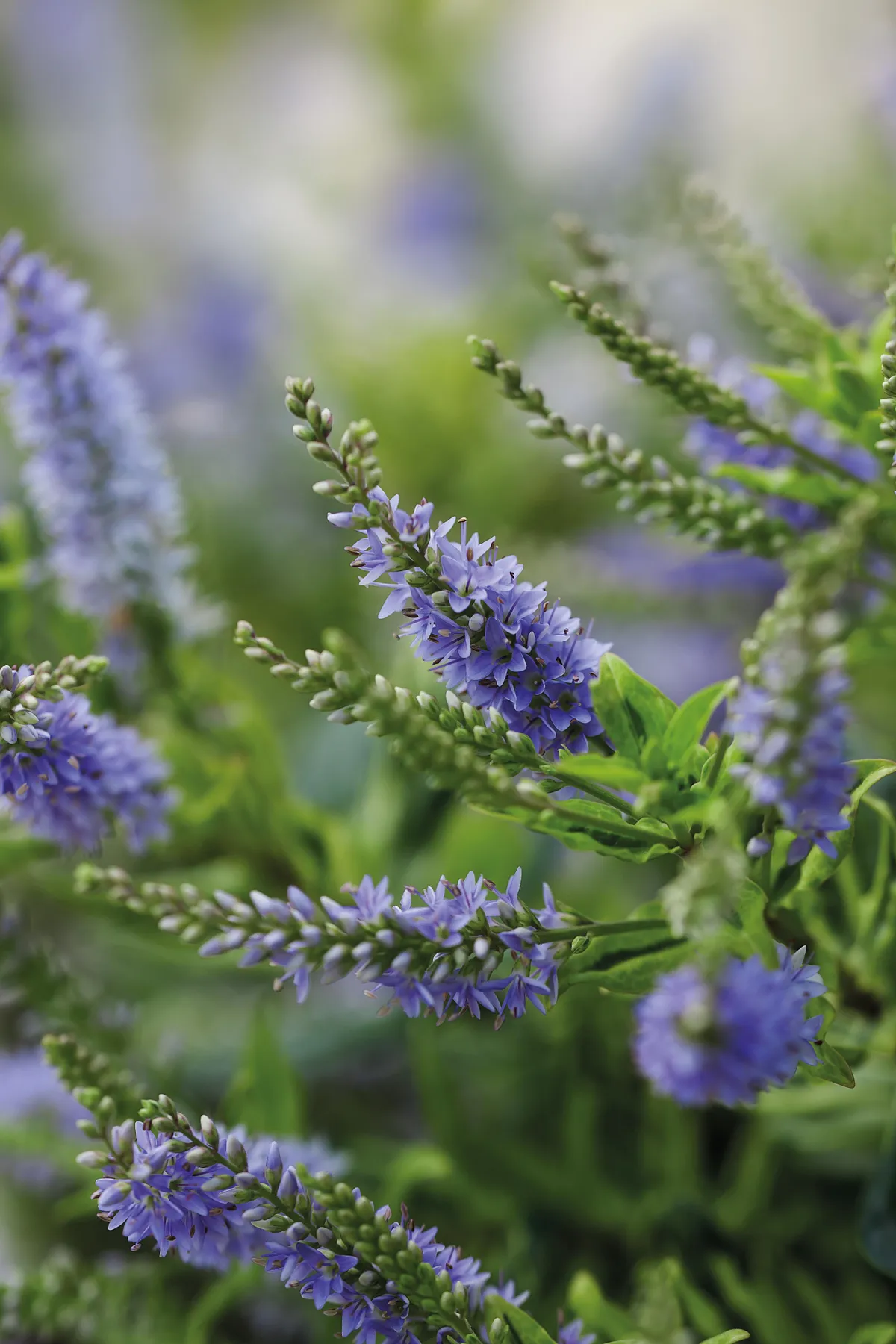
This variegated hebe is a recent introduction. The young leaves have a pale margin that ages to a creamy yellow in May and June. A floriferous plant that has masses of pale-blue blooms. 50cm. RHS H4.
Hebe buxifolia ‘Nana’

A dense, rounded hebe shrub with small, elliptical, glossy leaves, about 1cm long, that resemble those of boxwood. The pale-lavender flowers appear at the tips of the stems in July. A robust cultivar that requires little maintenance. 30cm.
Hebe ‘Heartbreaker’
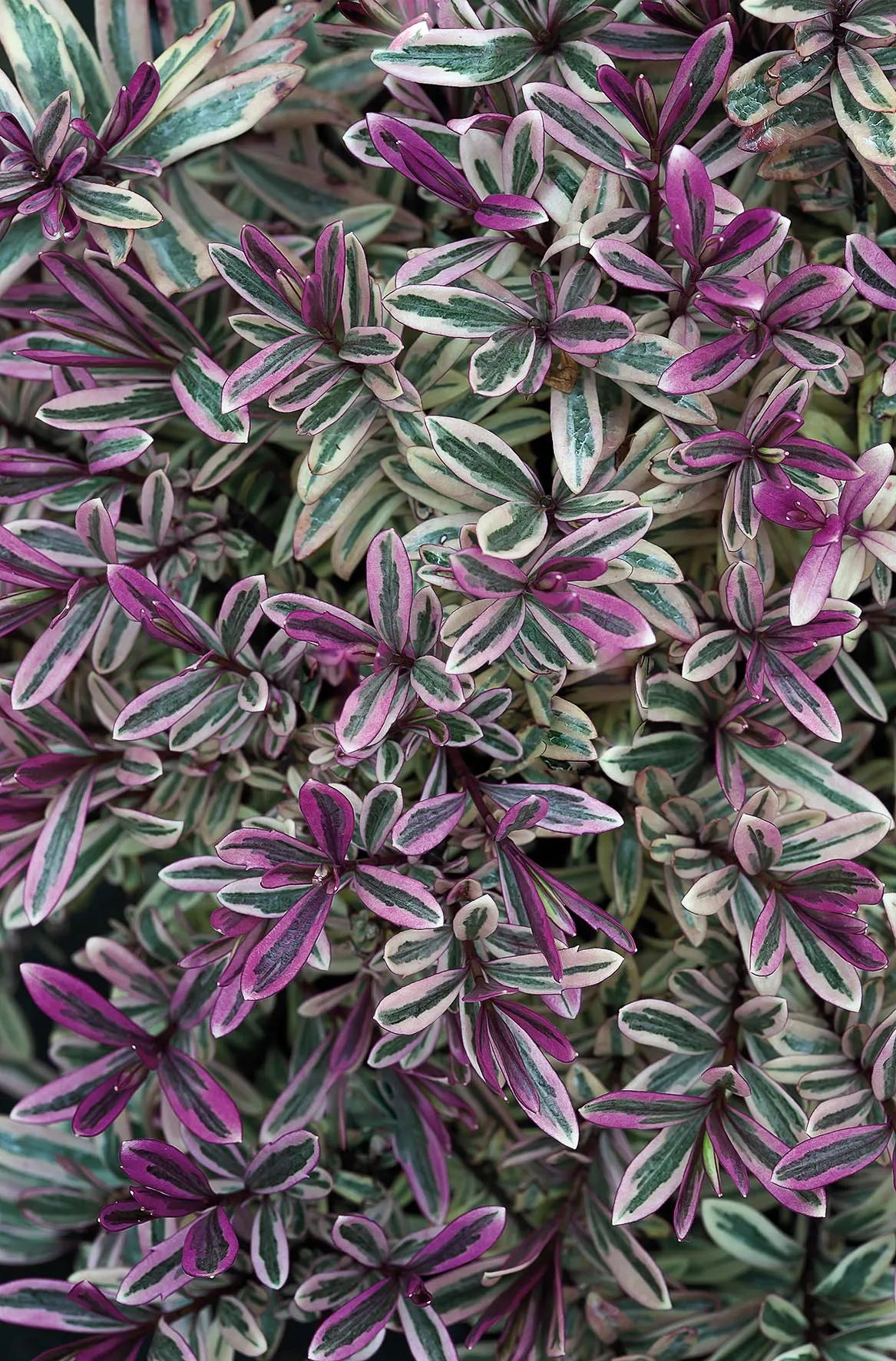
A hebe grown primarily for its colourful foliage. During the summer the leaves are green with a white border but in autumn they turn pale purple and pink. Lavender-coloured racemes of flowers in summer. 75cm. RHS H3.
Hebe Garden Beauty Blue (= ‘Cliv’)
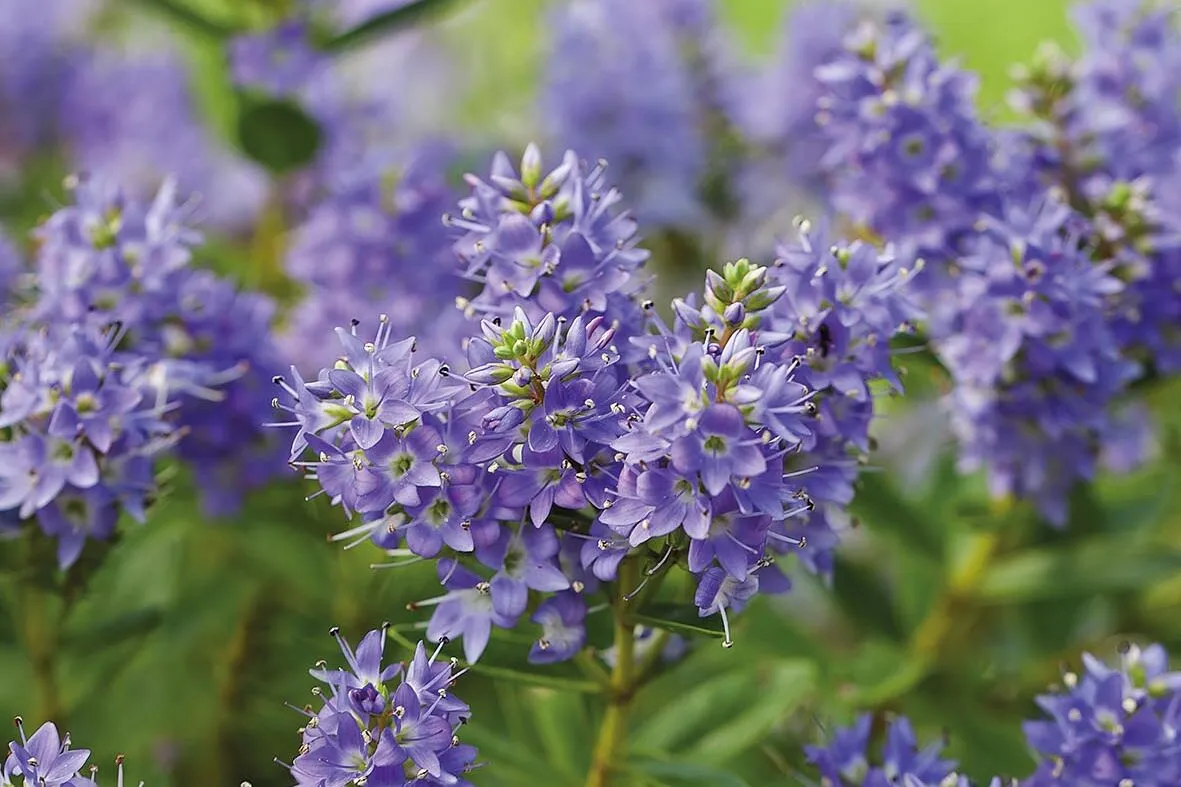
60cm. RHS H4.
Hebe Starlight (= ‘Marklight’)
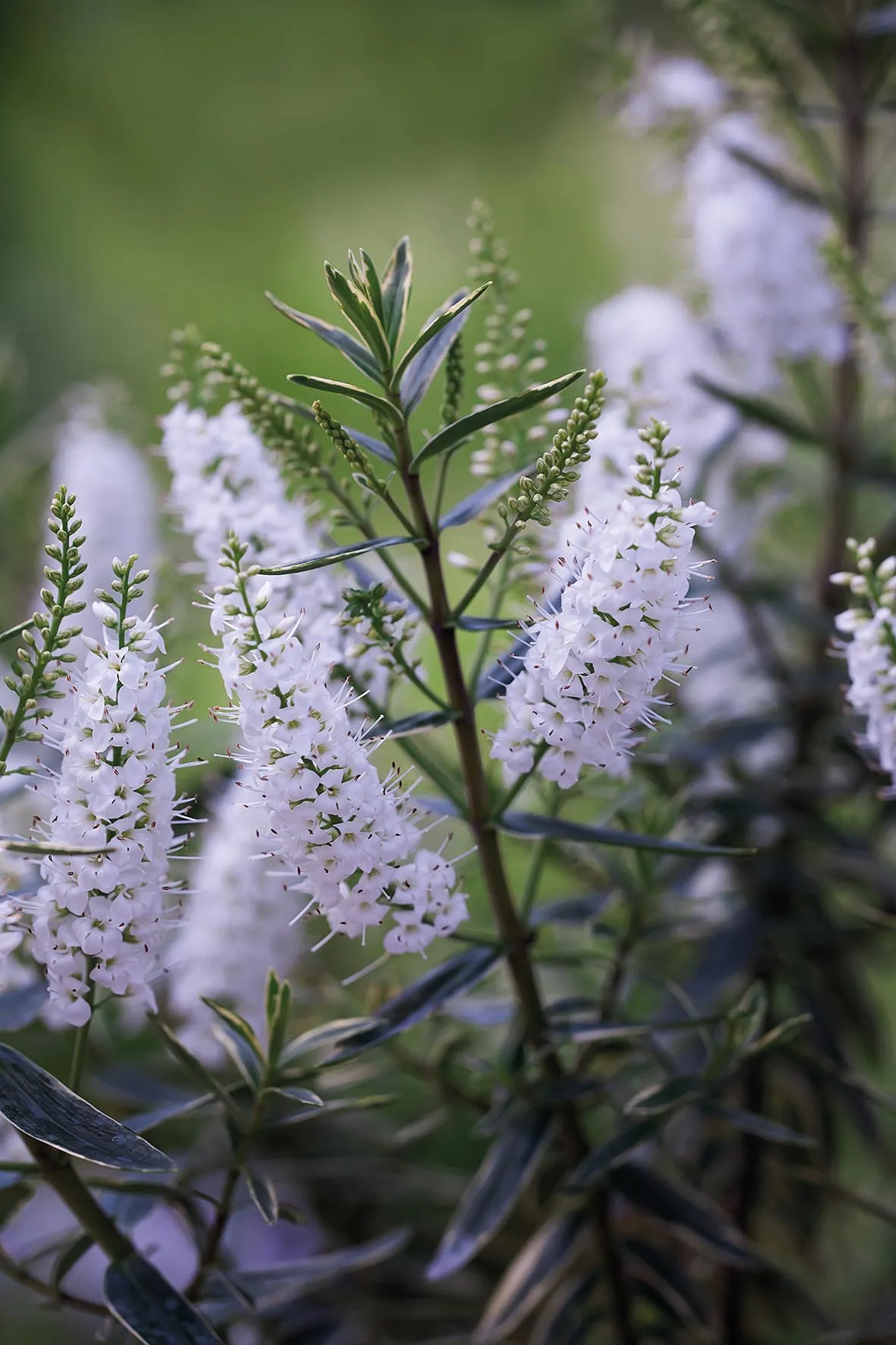
The combination of green and cream variegated foliage and dazzling, bright-white flowers on this hebe attracted a lot of attention when this cultivar was first introduced in 2018. 1m. RHS H3.
Hebe Blue Ice (= ‘Lowapb’)

Raised by Lowaters and introduced in 2013, this hebe was selected for its compact shape and bright-green foliage. Masses of pale-blue flowers on upright spikes appear for about six weeks in midsummer. 50cm.
Hebe ‘Red Edge’

A popular hybrid hebe that was introduced in the 1960s. The glaucous leaves have a red margin that becomes even more pronounced in winter. The small flowers are pale mauve. 60cm. AGM. RHS H4.
Hebe Garden Beauty Purple (= ‘Nold’)
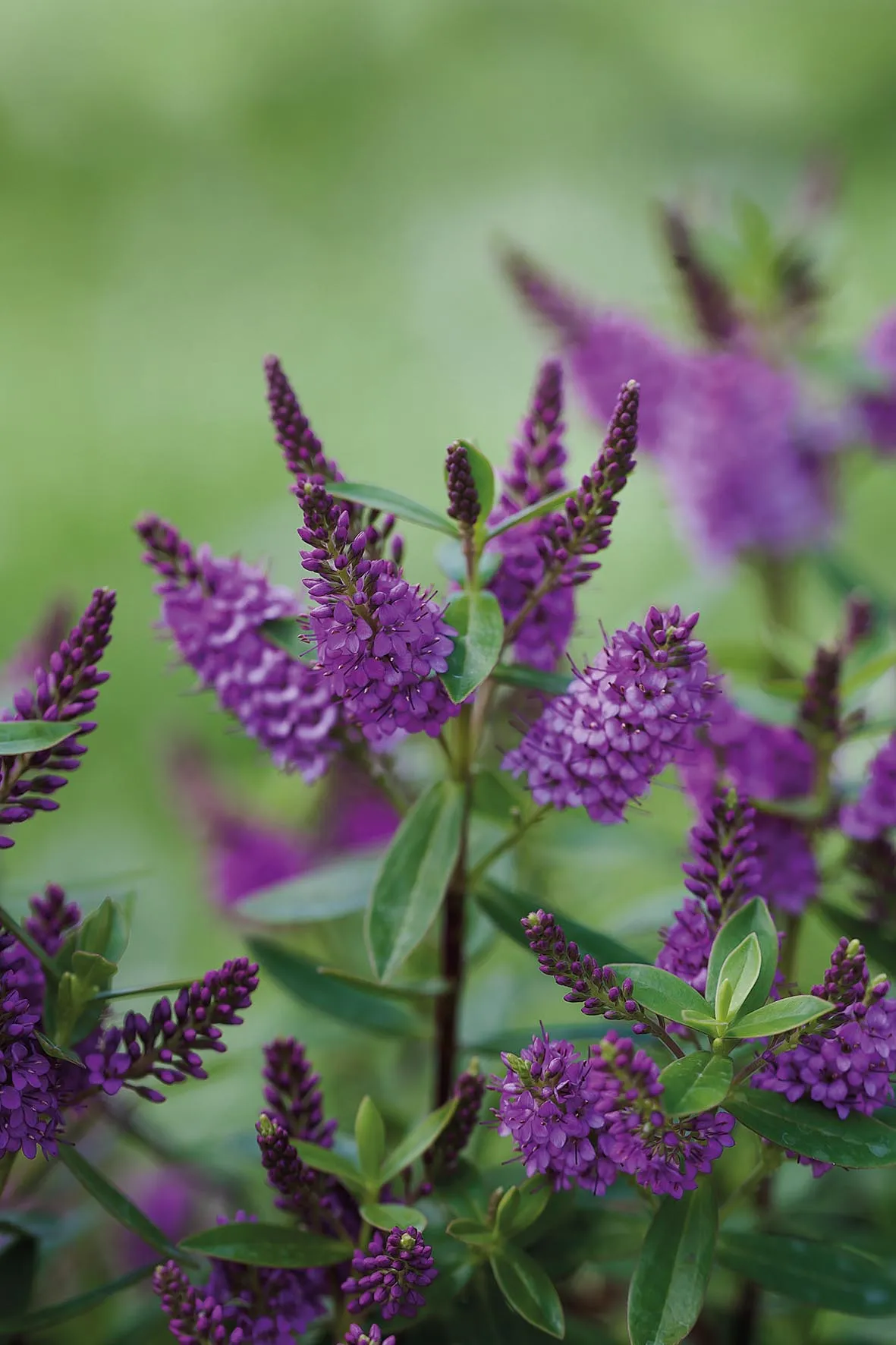
A rounded and compact hebe shrub that has small, deep-green leaves. The purple flowers first appear in early June and become paler as they age. 65cm. RHS H4, USDA 8a-10a.
Hebe Blush Elegance (= ‘Lowele’)
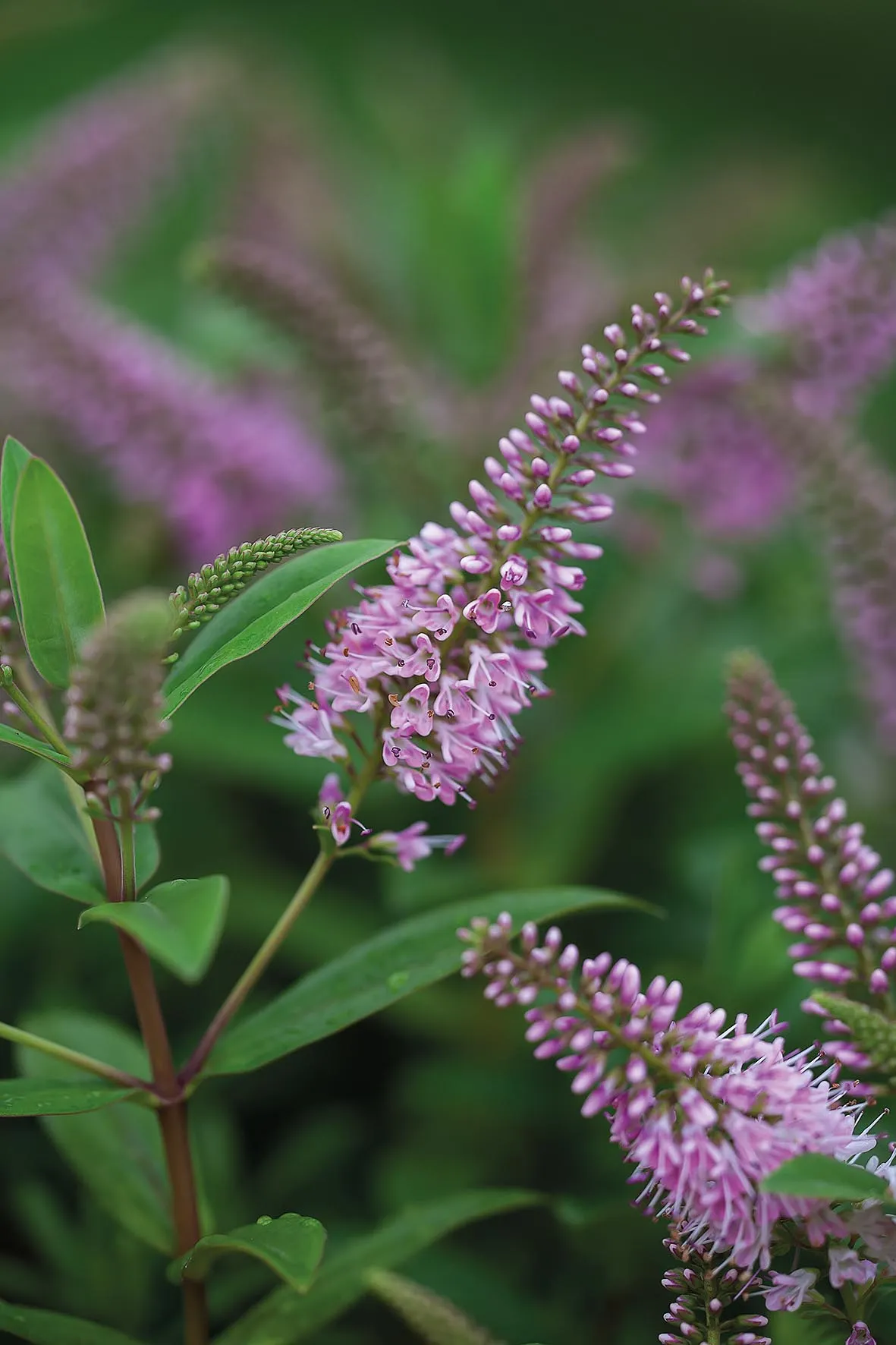
A large and floriferous hebe shrub with glossy, green foliage that is covered with soft-pink flowers from July through to October. The flowers fade almost to white as they age. 1.2m. RHS H3.
Hebe Midnight Sky (= ‘Lowten’)
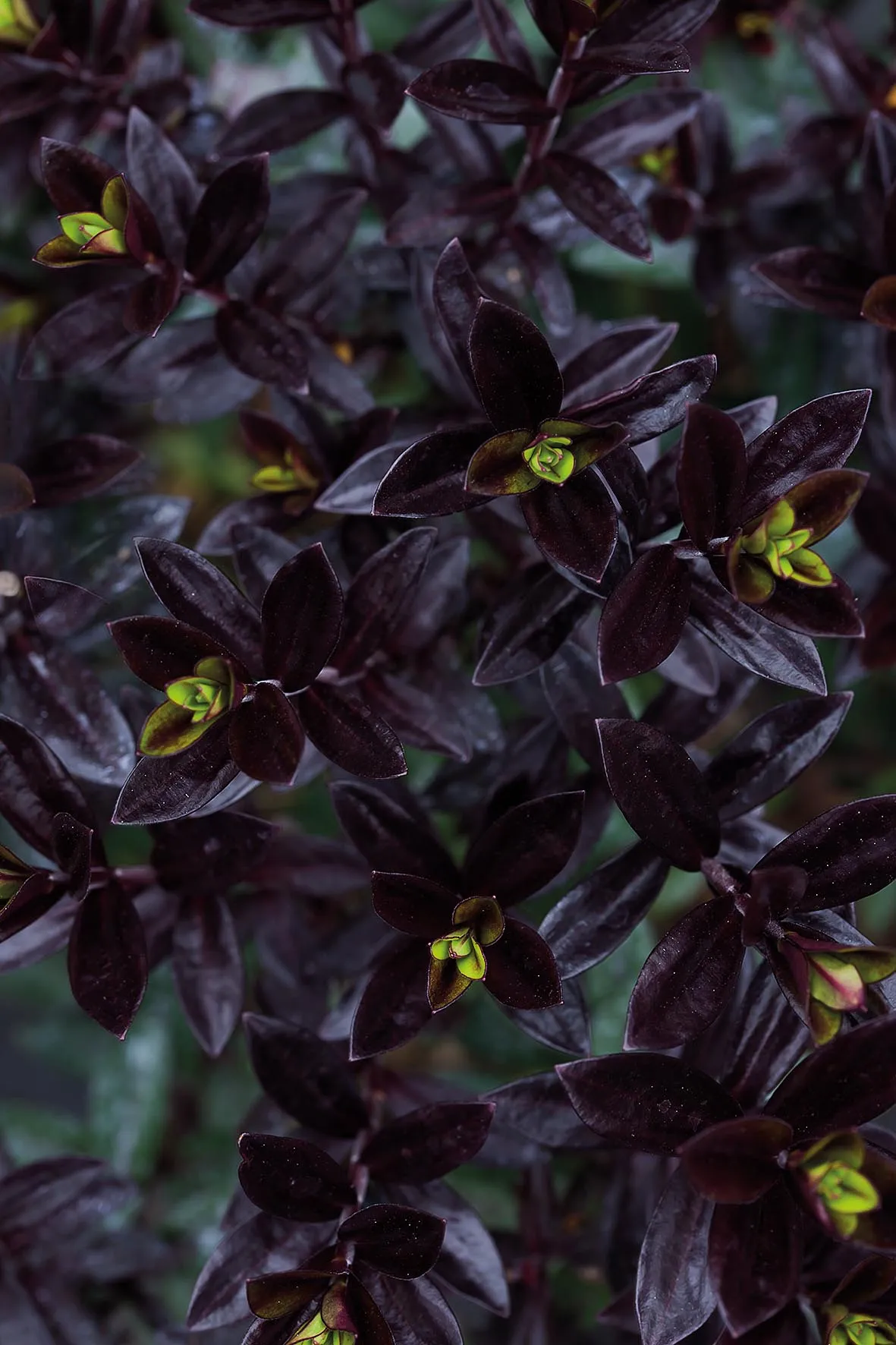
A startling sight in winter when the glossy, green leaves turn deep purple, sometimes looking almost black. The flowers appear from June to August and are a purplish-pink colour. 75cm. RHS H4.
Hebe ‘Caledonia’
Buy from J. Parker's (£6.99)

A compact, rounded hebe plant that is ideal for a container. The striking, dark-green leaves have a red edge and are entirely plum-coloured when they emerge. Violet flowers from late spring to early autumn. 60cm. AGM. RHS H4, USDA 7a-10b.
Hebe ‘Baby Marie’
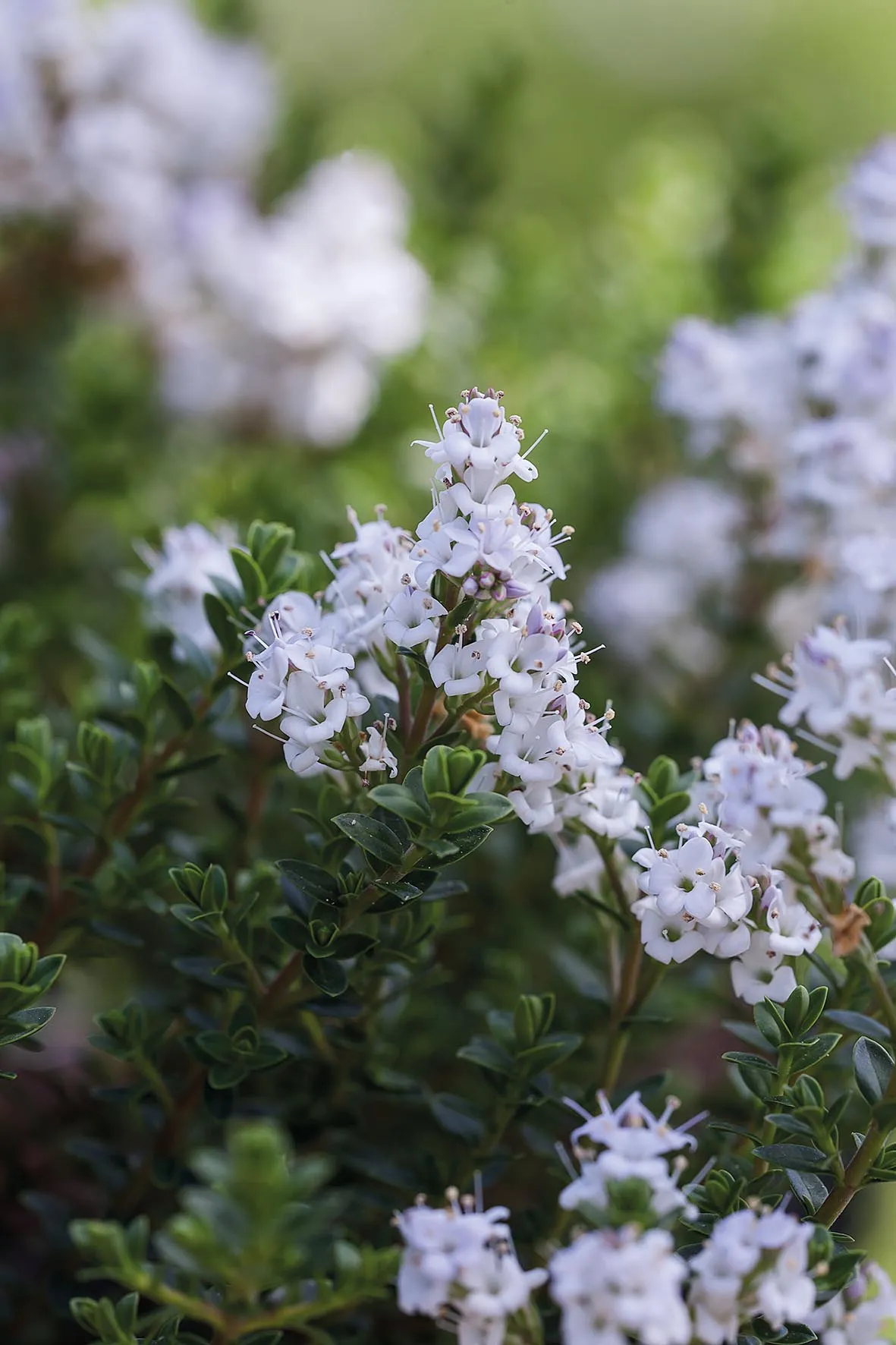
A low-growing, compact hebe that makes a good flowering plant. The flowers are pink in bud, opening to a pale lilac and fading to white. An early flowering form that blooms in April and May. 40cm. RHS H4.
